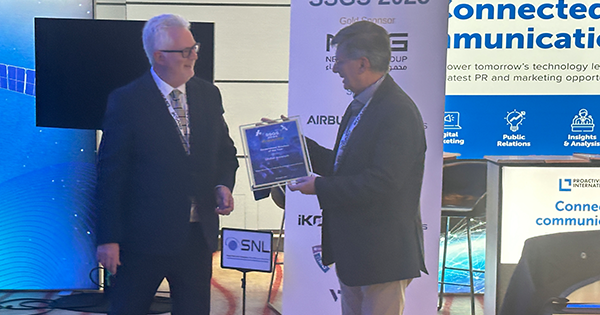Article: Spectrum Management Challenges

Spectrum Management Challenges

As the number of satellites in orbit continues to grow to meet the demand for high-speed and ubiquitous connectivity, so too does the competition for use of the spectrum. Once limited to just a handful of large operators, many of the barriers that used to be in place have lifted and space has become more accessible. As a result, we’re seeing a swathe of new entrants, from commercial players to national initiatives, all competing for use of the spectrum. Each new network or constellation means more frequency coordination, more filings with the ITU, and more potential for overlap. In this crowded environment, there is also an increased risk of errors occurring that could result in harmful interference and degraded performance.
Regulatory and licensing complexities
For newcomers trying to find a path through the intricate web of regulatory requirements, there’s an awful lot to get to grips with. Understanding which frequencies are available, how to apply for rights of use, and what obligations follow thereafter is far from straightforward. National regulatory bodies manage the use of the spectrum within their borders, and each country goes about this process in a slightly different way. International coordination through the ITU adds another layer of complexity.
Operators must obtain permission to use the spectrum through a satellite filing obtained by applying to their national regulatory authority, such as Ofcom in the UK or Federal Communications Commission (FCC) in the US. These national bodies process and submit the filing to the international regulatory body, the International Telecommunication Union (ITU). Applying for a satellite filing is a complex, lengthy and resource intensive process because applicants must comply with the technical and legal requirements of the filing as well as the international regulatory framework, and must also coordinate with other operators to avoid interference.
Traditional operators face a different, yet still significant challenge. They must contend with legacy frameworks that were designed in an era of GEO dominance, before the surge in non-geostationary constellations. There’s a growing call for reforms to the regulatory landscape to better reflect the realities of today’s dynamic space environment, yet change is slow to realise. In the meantime, operators must balance the need to adapt their networks to better suit the needs of their customers with having to maintain compliance with existing and often outdated regulations.
Challenges on the ground
It’s not just the space segment that is undergoing a significant transition. The ground segment too is having to adapt and expand to support the evolving and ever busier space segment. The transformation happening at ground level is also serving to make spectrum management more complicated. The quality of equipment plays a decisive role in maintaining performance; even a single low-grade antenna can cause errors and generate unwanted interference. This becomes especially relevant with the growing use of flat panel antennas. These advanced systems can steer multiple beams, track satellites in motion, and connect to more than one spacecraft at a time, which makes precision absolutely critical. When antennas underperform, the effects ripple through an already demanding technical environment. As the ground segment continues to expand, preserving the integrity of the RF landscape must remain a central focus. It’s important that operators and service providers choose antennas and associated equipment from trusted, proven suppliers, to ensure reliability and reduce the risk of interference.
Ground infrastructure is also becoming more software-driven, which is introducing much needed flexibility and agility. In the past, hardware upgrades often required physical replacements whenever greater capacity or improved performance was needed. By contrast, a virtualised approach enables remote configuration and management of essential functions, keeping gateways adaptable and easier to maintain. Virtualisation of the ground will also give satcom a means to leverage the benefits that cloud-based infrastructure can provide. However, alongside all of these benefits, virtualisation of the ground segment also adds new layers of complexity. Interoperability is a key consideration, which is why the work carried out by initiatives such as DIFI to develop an interoperable IF/RF standard is so important.
Creating a more coherent approach to spectrum management
Spectrum is a shared and finite resource, yet the regulatory framework is inadequately equipped to manage the demands for spectrum use as they stand today. As new players continue to enter the market and competition for use of the spectrum increases, this will only add to the complexity of coordination and increase the likelihood of errors and interference.
Ultimately, effective spectrum management depends on collaboration. The need for greater coordination is clear, with regulators, operators, service providers and manufacturers all having a role to play. Without stronger frameworks and greater transparency, the risk of interference and degraded performance will grow, which could be detrimental to the industry itself.
Global Invacom’s CTO, Bob Potter is taking part in a panel discussion on this complex topic at Space Tech Expo in Bremen, Germany. The session is at 11am on Wednesday November 19th: ‘Navigating Technical and Spectrum Licensing Challenges’
To book a meeting at Space Tech Expo with a representative from Global Invacom, please get in touch: https://globalinvacom.com/pages/new-contact-sales

